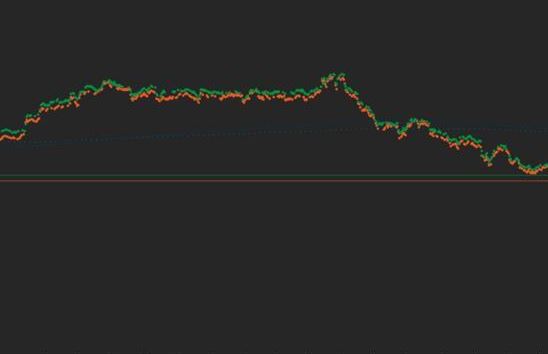In Forex trading, tick scalping is a short-term intra-day strategy that involves buying and selling currencies frequently to make small profits. Here are the benefits/risks of tick scalping. You need to understand how tick scalping works and the benefits/disadvantages of this trading strategy.
Definition of tick scalping
As a trading strategy for Forex, tick scalping involves buying and selling securities within a short period, usually seconds or minutes. It targets small price movements and takes minimal profits by executing it several times in one trading session. Instead of making substantial trades with substantial amounts of capital, traders concentrate on a high volume of trades with small price changes.

By using advanced algorithms to identify market trends and patterns, tick scalping allows traders to execute rapid-fire transactions quickly, maximizing profits. To keep up with market fluctuations, traders need quick reflexes, knowledge of market intricacies, and fast trading platforms.
As traders do not over-rely on long-term trends to make profits, tick scalping offers several benefits, including lower risks. Its high-frequency nature allows it to provide quick wins without holding positions overnight. However, the method is challenging to learn and requires patience and discipline to master.
Benefits and risks of tick scalping
Before implementing tick scalping, it is important to consider its advantages and disadvantages in forex trading. In terms of benefits, tick scalping allows traders to make multiple trades quickly, potentially increasing their profits. Additionally, it minimizes market exposure because trades are closed quickly. However, tick scalping comes with certain risks as well. The number of trades involved leads to high transaction costs and the possibility of losing money if the market moves against the trader.
Advantages:
- Numerous trades offer the potential to increase profits
- Quick trade closure minimizes market exposure
Disadvantages:
- Frequent trading results in high transaction costs
- Losses may occur if the market moves against the trader
As traders consider tick scalping’s benefits and risks, they should also consider liquidity and volatility.
How to use ticks in Forex trading
Traders need to be able to identify market trends and monitor price movements that influence their trading strategy by using ticks to measure changes in the price of currency pairs.
Within a specific timeframe, traders can make informed decisions about when to buy or sell their positions by following tick movements. Traders can also use tick scalping strategies to profit from small price changes by executing multiple trades simultaneously. Ticks play a crucial role in forex trading and provide valuable insight into market dynamics.
The tick is the smallest unit of currency pricing in forex trading. They are used to measure changes in price within a short timeframe, typically one second or less. To determine which currency pairs may offer profitable trading opportunities, traders utilize ticks to monitor real-time market changes, assess volatility levels, and assess volatility levels.
Forex traders also use ticks to analyze overall market activity over longer periods and provide crucial data for tick scalping strategies. A trader can identify patterns that may influence buying and selling decisions by analyzing the volume of ticks at different times during the day or week.
In the markets, tick volume often correlates directly with liquidity. Higher volumes can indicate more significant price movements because more buyers and sellers tend to be interested.

Although ticks may seem insignificant, their significance in tick scalping cannot be overlooked.
Bottom line
Trading ticks in Forex is a method of profiting from small price movements by buying and selling currency pairs quickly. Monitoring market conditions, selecting the right currency pairs, and executing trades disciplined and patiently are key to tick scalping. It has several benefits, including high potential profits, low-risk exposure, and flexibility in trading hours. However, it also has risks, including high transaction costs and intense focus requirements.


